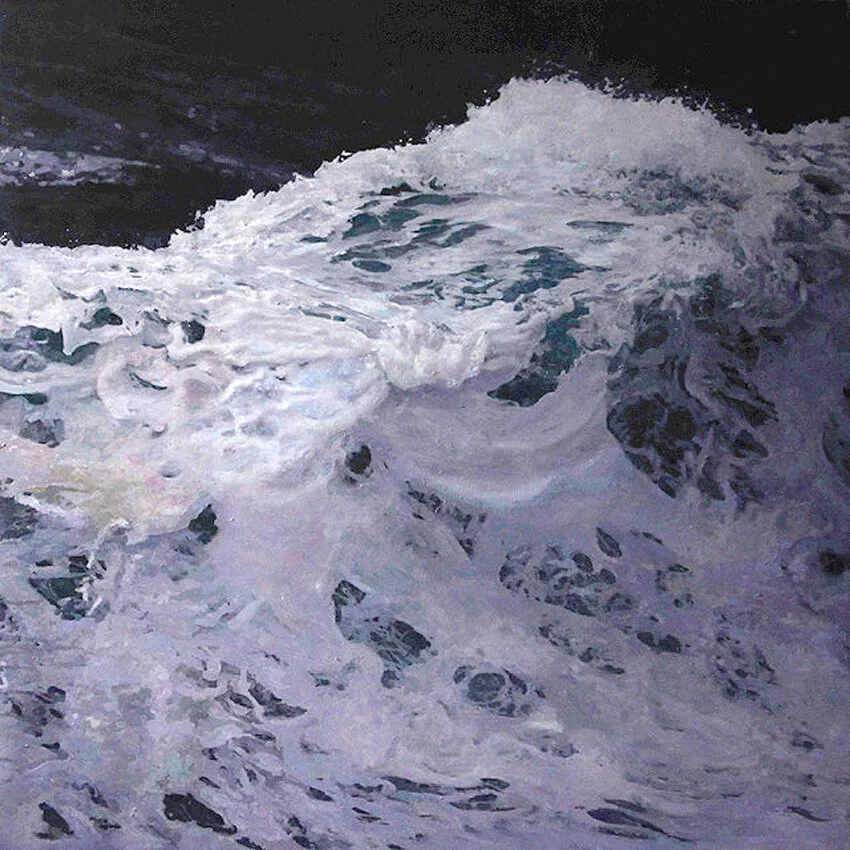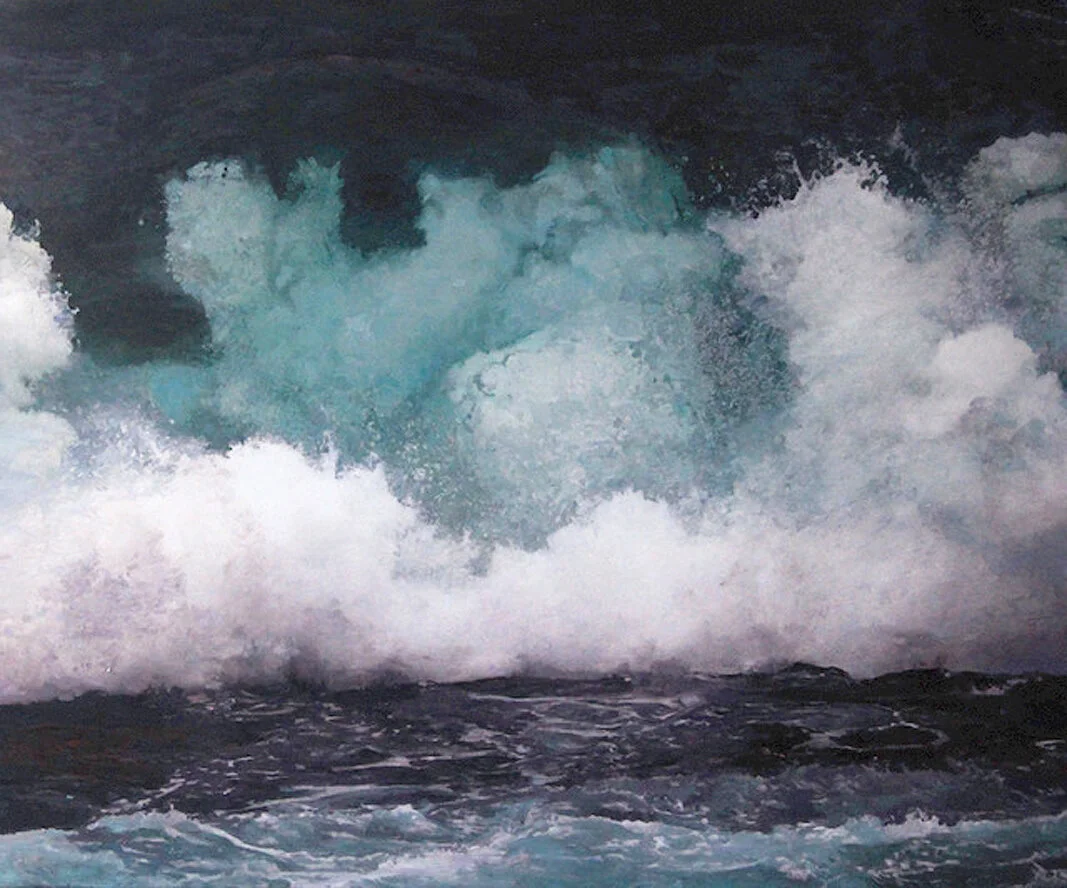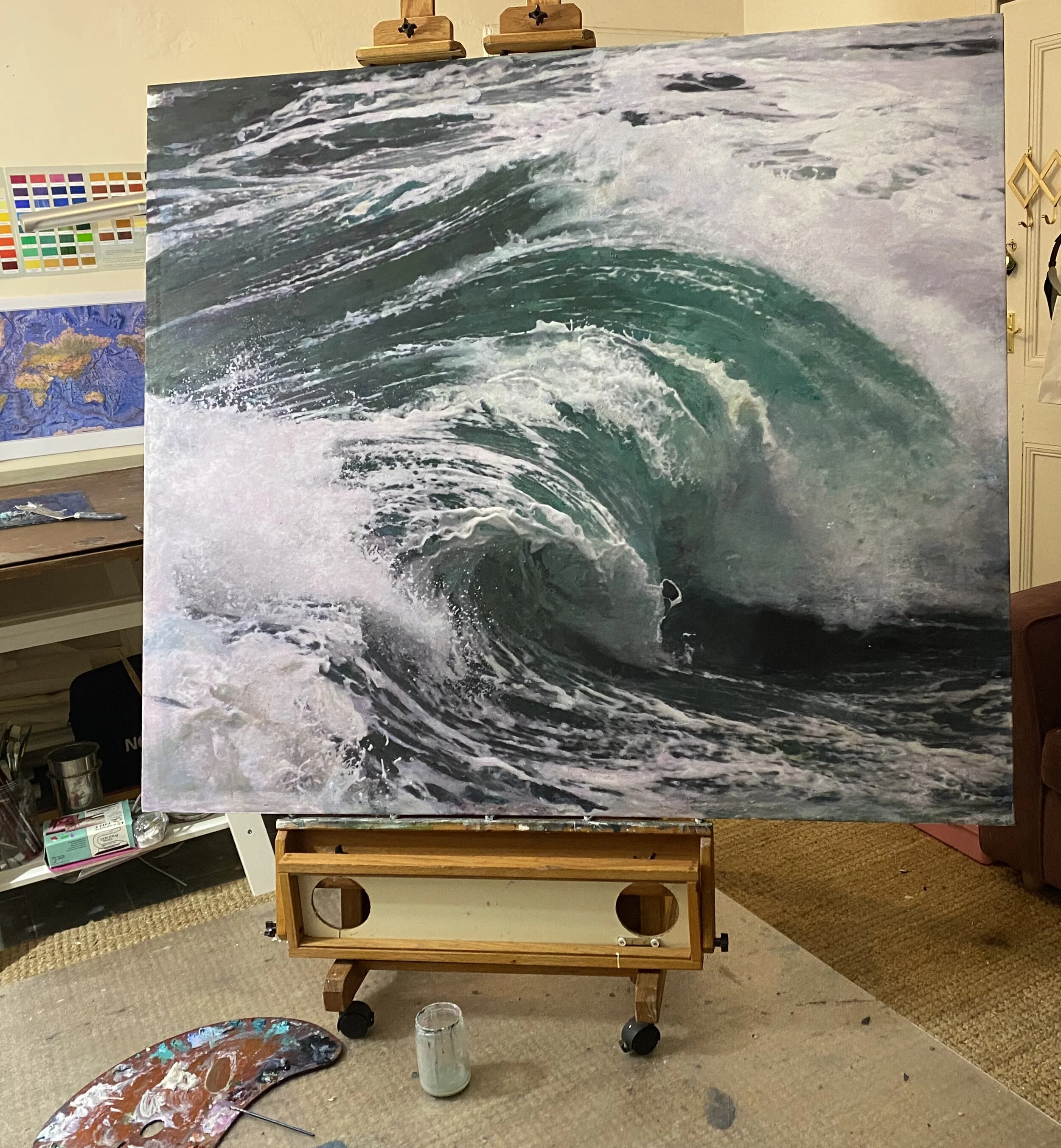Shetland, the Sea and Serendipity - Dawnne McGeachy
How does where you grew up influence your work?
Growing up beside the sea, being the child of a fisherman and from a family of fisherfolk, on both sides, had a profound impact on my relationship to and with the ocean. From an early age my understanding of it was very different to that of my peers. I was captivated by it but also very wary.
55.4241° N, 5.6054° W
What is your work about?
I have been obsessed with the sea since I was a very small child and really wanted to understand how it worked, the science of the waves. It is a chaotic and beautiful experience watching waves crash on the shoreline or looking over the side of a boat and seeing the white foamy paths the boat makes cutting through the water. It always takes my breath away. I particularly like the colour of Shetland water; it is a rich deep turquoise. My house is also situated about 30 feet from the sea, so I get to see its varying tempers on a daily basis. And it can be wild. Waves crashing on the bedroom window.
What gets you up in the morning and want to paint?
I am motivated by the paintings and the struggle to get it to a point where I am satisfied with it; a day I know will never come but the journey to get there is never dull, if a little frustrating. I also love the alchemy of painting, mixing colours, sourcing new paints and materials are a great joy. The materiality of my work is really important to me and my choice of paints and mediums is very much wrapped up in that. I love the idea that pigment is floating, suspended in the liquid. It seems to correlate nicely with my feeling toward the sea
What was your experience like at the Glasgow School of Art and at the beginning of your career?
I loved being at the Glasgow School of Art. It felt like home the second I walked into the Macintosh building. It was strange because I had never felt a sense of calm like it, other than my bedroom at home. I got a lot of support from my tutors and I am pleased there was such a focus on drawing. I think the tools and techniques I learned while there are what has scaffolded my work. Life drawing every day for 5 years was certainly of benefit. After those 5 years I got a scholarship to study in America. The American University experience was very different, but I enjoyed both institutions for different reasons.
Which artists influence you and why?
I have a very eclectic mix ranging from Rembrandt, Richter, Keifer, McTaggart, Saville, Guilde, Bellany, I also love Peter Matthews work who was awarded a spectrum prize the same year as me. I tend to connect most well with work I feel has a sincerity, honesty (in a way that I understand it).
Tell us about the messages to the sea
During lockdown I had more time to reflect on the work I was doing and remembered a story my mum told me about her finding a message in a bottle on the shoreline of Eshaness in Shetland. She was thrilled that she had a pen pal from the mainland. I liked the idea of the sea bringing stories and messages to people; connecting with serendipity. I remembered that while I was studying in America for 2 years, my mum wrote to me every single day and my dad wrote to me every week. I hand traced all the letters first thing in the morning and used them in my paintings. It made me feel less homesick.
Tell us about Glass Bottles
I have been writing messages on my work but never revealed the text; things my family and friends have said to me are hidden in the layers of my paintings of the sea. I have lots of little bottles I found on the shoreline (and on eBay!) in my studio and I dug out my old letters from America and began hand tracing them again. I begin all the letters with ‘Dear Sea’ then extract text from the hand traced letters and put them in a sealed bottle, where some of the text is partially seen through the glass. Writing to the sea has helped me gather my thoughts and process things in a new way.
How has Covid 19 affected your practice?
I am naturally a solitary person, so the isolation part hasn’t affected me too much and I have been able to work as normal. However, I have started to work on smaller paintings to sell on the artist support pledge. It’s a great idea and I know it has been a lifeline to some of my friends.
I have a 3-person exhibition in the Scottish Gallery in September and am hoping very much that it will go ahead. It’s strange to think the way we interact with art, visit galleries might be changed forever. The Scottish Gallery have been proactive in changing how they operate and have had a zoom opening and YouTube channel to meet the exhibiting artists.









